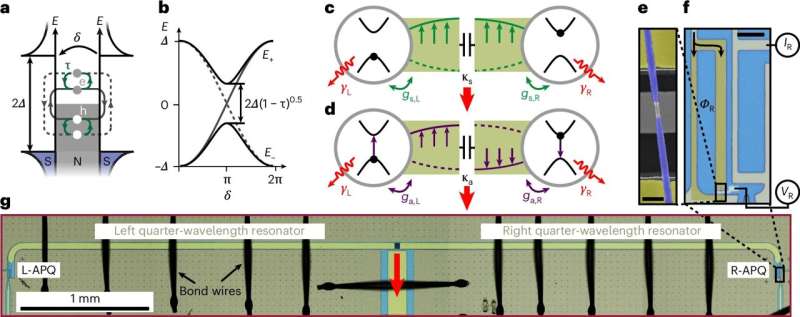Physicists from the University of Basel have made a breakthrough in quantum computing by successfully coupling two Andreev qubits over a macroscopic distance using a microwave resonator. This development lays the foundation for the use of Andreev qubits in quantum communication and quantum computing, paving the way for more reliable and scalable quantum systems.

Coupling Andreev Qubits
Quantum computation and quantum communication use qubits as the basic unit of information. One potential approach out of many being investigated is Andreev pair qubits.
At the interface of a metal and superconductor, an electron from the metal becomes part of a Cooper pair (electron pair) and enters the superconductor, whereas a hole is reflected into the metal. This process results in Andreev-paired qubits. Bifurcating Bound-statesAndreev Bound states are thus generated in this process, which is of a pair of occupied and empty states—and the ends now form the qubit. They are immune to many types of external perturbations (topological invariance) and have long coherence times, providing an attractive route toward reliable and scalable quantum systems.
Microwave Resonators: Bridging the Gap
The researchers from the University of Basel were able to demonstrate a strong quantum mechanical coupling of two Andreev qubits, individually trapped in semiconducting nanowires, in their pioneering work. For this, the two qubits were connected via a superconducting microwave resonator to allow microwave photons to be exchanged between the qubits.
The microwave resonator (right) has two functions: it allows the qubits to be read out by the researchers, and it also wires together both qubits which in this case behave as if they were “talking” with each other without dispelling any microwave photons away. The researchers showed that such Andreev pair qubits were well suited as solid-state, compact, and scalable qubits for quantum technology by combining these three quantum systems.
Quantum Technology Implications
These results represent a significant advance toward the large-scale integration of Andreev qubits and quantum communication. This paves the way to demonstrate Andreev qubits in larger quantum systems, like universal and scalable quantum computers, or secure quantum communication networks.
The researchers point out that quantum technologies need to be able to exchange microwave photons between the qubits and resonators. With this demonstration, the team paves the way for future improvements toward practical quantum computing and communication in the areas of cryptography, simulations, and problem-solving.
